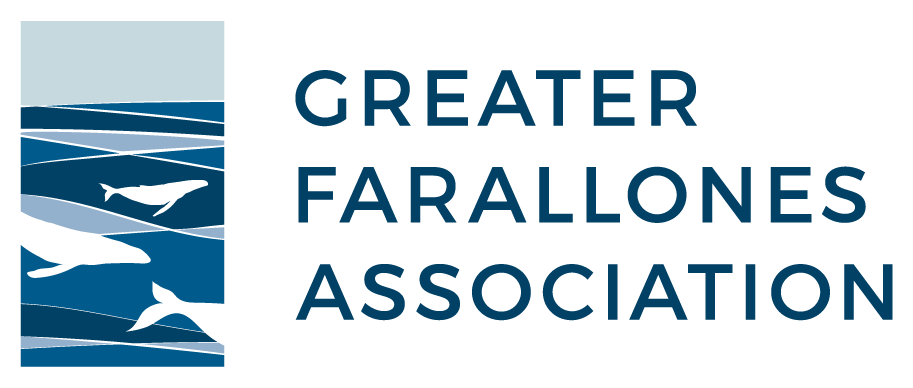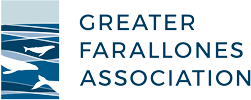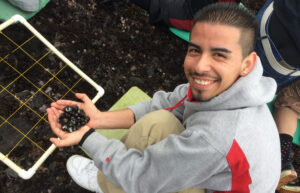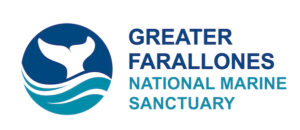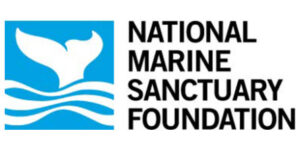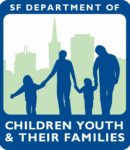Greater Farallones Association and Greater Farallones and Cordell Bank National Marine Sanctuaries education programs bring the enormous appeal of the ocean to your students through science field trips, classroom programs, exhibit discovery experiences, and student field monitoring opportunities, with teacher workshops and resources.
K-16 Marine Science Education
To inquire about program dates or reach program staff with questions, please submit an inquiry or contact Jean Alupay at jalupay@farallones.org.
Program Descriptions
Visitor Center Field Trips
The Greater Farallones Visitor Center in The Presidio of San Francisco offers fun, lively programs on many marine topics focused in the ecosystems of the national marine sanctuaries just beyond the Golden Gate. Highly interactive and NGSS standards-based, these ocean STEM learning programs are 90 minutes long and include enriching outdoor activities in the marine environment on Crissy Beach, engaging lab activities in the sanctuary’s pier classroom atop the San Francisco Bay, and indoor explorations of the visitor center’s marine life and ecosystem exhibits.
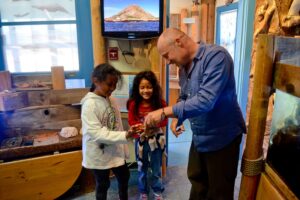
Ocean At Your School
This program brings exciting ocean science lessons directly to Bay Area classrooms. Led by our team of experienced marine science educators, our programs bring to life diverse topics such as Crabs (K-3rd), Seabirds (3rd-5th), Sharks (4th-6th), Otters & Ocean Germs (5th-7th), Ocean Acidification (7th-12th) and Deep Sea Corals (9th-12th). All programs are aligned with Next Generation Science Standards and NOAA Ocean and Climate Principles.
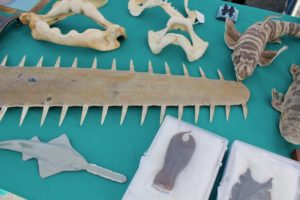
Ocean After School
Using the endless appeal of the Sanctuary’s wildlife and habitats, this program offers ongoing, lively classes on topics such as sharks, salmon, seabirds, whales, squid, and plankton. Our educators deliver eight, two-hour programs to after-school programs serving primarily at-risk San Francisco children in grades 3 to 5 during an 8- to 12-week window tailored to each school’s scheduling needs. Of the 18 sites served by the program annually, 16 are Title 1 schools and 17 are schools in which percentage of socioeconomically-disadvantaged children ranges from 61-97%. With support from the San Francisco Department of Children, Youth and Their Families, we are able to provide the Ocean After School program free-of-charge to these schools, bringing children from all backgrounds engaging, unique ocean experiences.

Fisherman in the Classroom
The Fisherman in the Classroom Program is a unique opportunity to bring the men and women who make a living from the sea into the classroom to discuss this vital and challenging industry with Bay Area and North Coast students. The particular background and personality of each fisherman is reflected in the programs making Fisherman in the Classroom rich and experiential for the student. The fishermen use games, slide shows, and props such as crab traps, Humboldt squid, Dungeness crabs, and fishing gear to provide a lively and interdisciplinary program that covers subjects as diverse as biology, economics, social science, and oceanography.
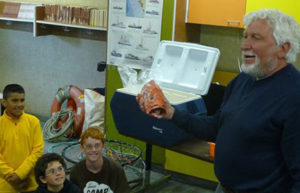
LiMPETS: Long-term Monitoring Program & Experiential Training for Students
LiMPETS provides immersive, science-based environmental education that brings students to coast to contribute to real science, and empowers them to become informed and engaged ocean stewards. The LiMPETS program, which connects over 5,000 students to the ocean each year, involves youth directly in real scientific endeavors, and increases their knowledge of marine environments and marine species, the many threats to our ocean ecosystems, and the importance of those ecosystems to our planet and our lives. LiMPETS programs are available for 6th grade through college students.
LiMPETS offers hybrid virtual/in-person options to fit the needs of schools, teachers, and students.
Virtual Programming
Science of Crabs (Kindergarten-3rd)
Science of Crabs is a fun, interactive, 60-minute virtual program where students learn about crab adaptations for survival, crab behavior, crab diversity, and crab life cycles. Our marine science educators lead activities including a crab costume dress-up, the “mommy crabby dance,” interactive quiz questions, and observations of live sand, hermit, rock, and shore crabs! Book your program today to learn about local crabs in the Greater Farallones National Marine Sanctuary. NGSS by grade: K-LS1-1, 1-LS1-2, 2-LS4-1, 3-LS1-1.
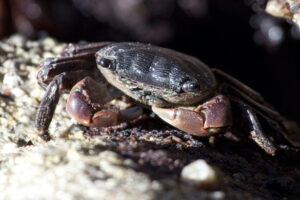
Soundscapes of Wonderful Whales and Playful Pinnipeds (Kindergarten–3rd)
Bring your students on a virtual cruise to the Farallon Islands! During this 60-minute interactive online program through our sanctuary, students will encounter a diversity of marine mammals from seals and sea lions (pinnipeds) to dolphins and enormous blue whales. Our marine science educators will use a combination of soundscape activities, online quiz questions, and observations of marine mammal artifacts led by our educators to distinguish what makes all these marine mammal groups different, but also closely related to us humans! NGSS Emphasis by grade: K-LS1-1, 1-PS4-1, 1-LS1-2, 2-LS4-1, 3-LS2-1. (Photo: Ed Lyman/NOAA Fisheries. Permit 14682-38079, humpback whales underwater)

Plankton! Microscopic Marvels (3rd-5th)
Plankton are the weird and wonderful drifters of the sea. Learn how plant-like phytoplankton produce half of the world’s oxygen and how zooplankton fuel the bottom of the ocean food web supporting fish, seabirds, and even whales! Our 60-minute virtual plankton lab introduces this subject with fascinating videos and an exploration of living plankton streaming from two microscopes. The program also features an interpretive dance of the barnacle life cycle and ocean acidification demonstrations by our science instructors. NGSS Emphasis by grade: 3-LS1-1, 4-LS1-1, 5-PS3-1.
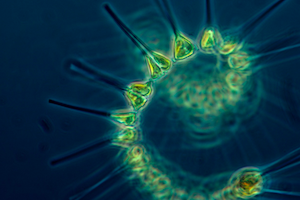
Underwater World of Sharks and Rays (4th-6th)
Transport your students into the underwater world of sharks and rays, perfect for shark experts and novices alike! Your students will learn about shark adaptations, shark diversity, and shark conservation during this 60-minute virtual program. Activities led by our experienced marine science educators highlight the famous great white sharks of the Farallones and include an interactive shark diversity identification quiz and presentations of shark artifacts and shark anatomy. Book your program today and learn all about the sharks that live in your local sanctuary. NGSS Emphasis by grade: 4-LS1-1, 5-LS2-1, MS-LS1-4, MS-LS1-8.
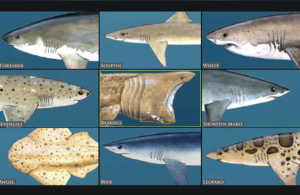
Salmon in the Sanctuary (6th-8th)
The salmon species that live in the rivers and seas of the West coast of California are bursting with stories of survival, adaptation, and adventurous migrations. Sanctuary educators will bring salmon and local watersheds to life with dynamic presentations on salmon lifecycles, salmon fishing gear, and local fishing techniques. The heart of this 60-minute program is an interactive dissection of a hatchery salmon exploring the internal and external anatomy of this incredible fish. NGSS: MS-LS2C, MS-LS4B, LS4BC. (Photo: NOAA Fisheries, coho salmon)
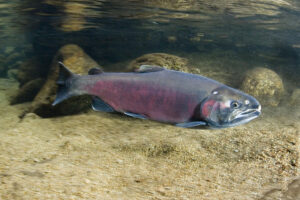
Ocean Acidification: A Sea of Change (7th-12th)
Students will observe live plankton samples and learn how increasing acidity affects ocean food webs and larval stages of organisms. Through demonstrations and experiments, this program will introduce your class to the process behind the changing chemistry and biology of the earth’s oceans. The 60-minute program concludes with a discussion of solutions to this threat to the health of our oceans. NGSS: MS-LS2-4, HS-LS2-4, HS-PS1-6, HS-ESS3-5.

Fisherman in the Classroom (7th-12th)
The Fisherman in the Classroom Program brings local commercial fishermen into classrooms to teach students about the rich cultural history and current day relevance of commercial fishing in Central California. This exciting 60-minute virtual program includes video of fishing techniques and features crab traps, salmon fishing gear, Humboldt squid specimens, and live Dungeness crabs. The program covers subjects as diverse as biology, economics, watershed ecology, social science, and oceanography. Besides putting a human face on important issues such as sustainable fisheries, climate change, watershed restoration, and marine sanctuaries, students learn how humans impact the ocean from a knowledgeable ocean expert with a unique perspective. NGSS: HS-LS2-2, HS-LS2-6, HS-LS2-7, HS-LS4-5.

Deep Sea Coral Communities (9th-12th)
Students will work in groups to evaluate biodiversity found in deep sea habitats of Greater Farallones National Marine Sanctuary using research videos taken from Remotely Operated Vehicles (ROVs). With training from a marine science educator, students will learn the techniques and challenges behind deep sea research and will be trained on species identification and habitat characterization. Students will learn how to estimate species abundance and diversity by viewing real ROV footage and recording, analyzing and graphing scientific data. This 60-minute program can also be extended into a multi-day program that explores and compares data between numerous west coast national marine sanctuaries. NGSS: HS-LS2-2, LS2.C; HS-LS2-7.
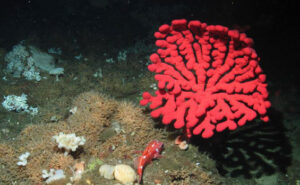
Donate today to provide scholarship funds to low-income communities and provide science education to future generations of environmental leaders. Together, we can make a difference through ocean education.
Thank you to our K-16 Education Program funders, supporters, and partners!
Through grant and donation support, we’re able to deliver engaging ocean programs free-of-charge to schools most in need.
Project Funders:
